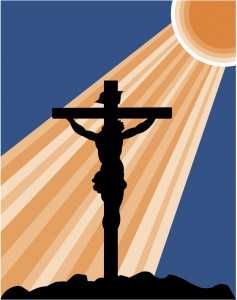Haftorah Reading
Jeremiah 7:21–8:3; 9:22(23)–23(24)
Testimony of Yeshua
On being a living sacrifice: omans 12:1–2
On Yeshua being our High Priest and the ultimate sacrifice: ebrews 4:14–5:10; 7:1–28; 8:1–6; 9:1–28; 10:1–39; 13:10–14
On being a pure spiritual temple: Corinthians 6:14–7:1; 1 Peter 1:14–16
On the spiritual priestly garments of the saints: phesians 5:27; 6:10–18; Revelation 7:13–14; 19:8
Outline of This Week’s Parashah (Torah Portion)
—6:8 (1) The Law of the Elevation or Burnt (Olah) Offering
—6:14 (7) The Meal or Grain (Minchah) Offering
—6:24 (17) The Sin (Chatat) Offering
—7:1 The Guilt (Asham) Offering
—7:11 The Thanksgiving (Todah) or Peace (Shelamim) Offering
—7:19 Eating in a State of Contamination
—7:22 Fat and Blood Not to Be Eaten
—7:28 The Parts of the Offering to Be Burned and Those Given to the Priests as Gifts
—8:1 Consecration of Aaron and His Sons for the Priestly Service in the Tabernacle
Study Questions for This Week’s Midrash (Torah Discussion)
1 6:10 [6:3 in Jewish bibles], Linen britches. The Jewish sages teach that every Israelite should be a human temple. If he is set-apart (kadosh), then the temple of his body will be kadosh; if he sins he contaminates it. This is consistent with the teachings of the apostles (see the Testimony of Yeshua readings above). Furthermore, in this parashah we see the high priest donning a “fitted” linen tunic and britches “on his flesh,” which was an illusion to robes of righteousness (Lev 6:10 [3]). Most of us have too casual a view of sin—something a righteous and set-apart Elohim hates and calls an abomination (Ps 5:5; Prov 6:16–19). Sin that is not repented of will damn us eternally (Ezek 18:4, 20; Rom 6:23). Our sin sentenced Yeshua to a hideous death on the cross in our place. (Selah: pause and reflect.)
Perhaps the greatest area of sin is with our mouths; it defiles our spiritual temples probably every day! (Read Mark 7:14–23 and Jas 3:1–12.) Our mouths sow discord among brethren, speak vanities, murders and lies—things that Elohim (his Hebrew name referring to the judgment side of his character) hates and calls an abomination in Proverbs 6:16–19. The tongue is a world of iniquity, especially behind closed doors where we let down our guard with our family and loved ones. There our tongues rip, slice, slash, murder, speak vanities and hypocrisy almost without measure. The word Babylon comes from the Hebrew word bavel meaning “confusion or mixture” referring to when the languages of men were confounded at the Tower of Bavel. How can we be a righteous and set-apart priesthood offering up praise and worship to our Creator with our lips when 30 minutes before our lips were murdering our wife, children, husband or someone else on the way to Shabbat services? Is this not confusion? A divided heart? A forked (serpent’s) tongue? The Scriptures plainly tell us to come out of Babylon’s ways (Rev 18:4). The writer of Hebrews says, “Follow peace (shalom) with all men, and holiness, without which no man can see the Master” (Heb 12:14). If we could but tame the tongue, then we would be able to steer the whole temple of our spiritual ship (to mix metaphors) into the glorious harbors of holiness and relationship with man and with our Creator. Let’s stop and take some time to repent of our sinfulness in these areas.
2 6:17 (10), No leaven. Why does YHVH stipulate this prohibition? The main Jewish commentaries are unable to answer this question. It is not until we understand the spiritual implications of leavening as revealed in the Testimony of Yeshua that this prohibition makes Continue reading



